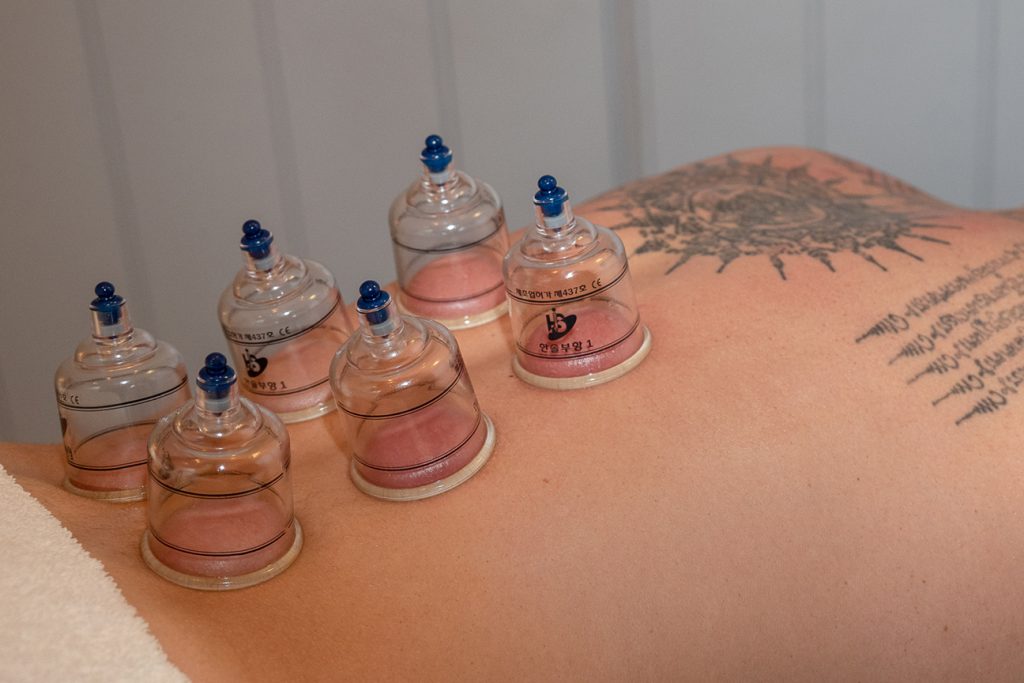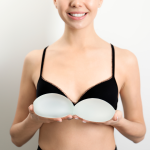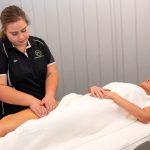In the world of alternative therapies, there’s a technique that’s been creating quite a buzz in recent years – cupping therapy.
This ancient practice has gained popularity, thanks in part to the circular marks often seen on the bodies of athletes and celebrities. But what exactly is cupping, and how can it complement the power of massage?
In this exploration, we’ll dive into the realm of cupping therapy, discussing its purpose, benefits, and why you should consider incorporating it into your wellness routine.
Understanding Cupping Therapy
Cupping therapy is a traditional healing modality that traces its roots back to ancient Egyptian, Chinese, and Middle Eastern cultures. It involves the use of specially crafted cups, typically made from glass, bamboo, or silicone, to create a vacuum or negative pressure on the skin’s surface.
This negative pressure draws the skin, underlying tissues, and muscles upward into the cup, which can be left in place or moved across the skin, depending on the therapist’s approach.
Concerns Addressed by Cupping Therapy
Cupping therapy is a versatile technique that can be applied to various health concerns. Some of the most common issues it can address include:
1. Muscle Tension and Pain: Cupping is renowned for its ability to alleviate muscle tension and discomfort. The negative pressure created by the cups helps to release fascial restrictions, providing relief from chronic pain conditions like backaches and neck tension.
2. Detoxification: Cupping stimulates the flow of blood and lymphatic fluids. This increased circulation assists the body in removing toxins and metabolic waste, making it an excellent option for detoxification. According to SumeyyeGok et al. (2016), cupping may treat diseases associated with heavy metal deposition in different parts of the body [1].
3. Respiratory Problems: Cupping therapy is often used to treat respiratory conditions like bronchitis and asthma. By stimulating circulation and loosening mucus, it can help ease breathing difficulties [2].
4. Stress and Anxiety: The calming nature of cupping therapy can help reduce stress and anxiety levels. The gentle pulling sensation of the cups on the skin induces a state of relaxation, promoting overall wellbeing.

Benefits of Cupping Therapy
Now that we’ve touched on the concerns cupping therapy can address, let’s delve into its benefits:
1. Pain Relief: Cupping therapy offers effective pain relief by promoting the release of muscle tension and reducing inflammation. Athletes often turn to cupping to speed up their recovery from strenuous workouts or injuries. You may have seen the dark purple circles on their backs, arms and legs from treatment.
2. Improved Circulation: The negative pressure created by cupping enhances blood flow, ensuring that muscles and tissues receive a rich supply of oxygen and nutrients. This can expedite the body’s natural healing processes.
3. Enhanced Detoxification: Cupping helps flush out toxins and stagnant fluids from the body. This can contribute to improved overall health and vitality.
4. Stress Reduction: The relaxation induced by cupping therapy can significantly reduce stress and anxiety, fostering a sense of tranquillity and mental clarity.
5. Immune System Support: By promoting lymphatic drainage and overall circulation, cupping therapy can bolster the immune system, making it easier for your body to ward off illnesses.
Book Your Cupping & Massage Appointment Today!
Are you ready to experience the holistic benefits of cupping therapy and massage combined? Our team of skilled therapists is here to provide you with a comprehensive treatment that targets your unique wellness needs. Whether you seek relief from muscle pain, stress reduction, or enhanced detoxification, cupping and massage can work in harmony to help you achieve your health and wellbeing goals.
Resources:
- Gok Sumeyye, Liyagil Kazanci Fatma nur Haciev, Erdamar Husamettin, Gokgoz Nurcan. Is it possible to remove heavy metals from the body by wet cupping therapy (Al-hijamah)? Indian J. Tradit. Knowl. 2016;15:700–704.
- Goodwin J, McIvor RA. Alternative therapy: cupping for asthma. Chest 2011;139:475–6.





